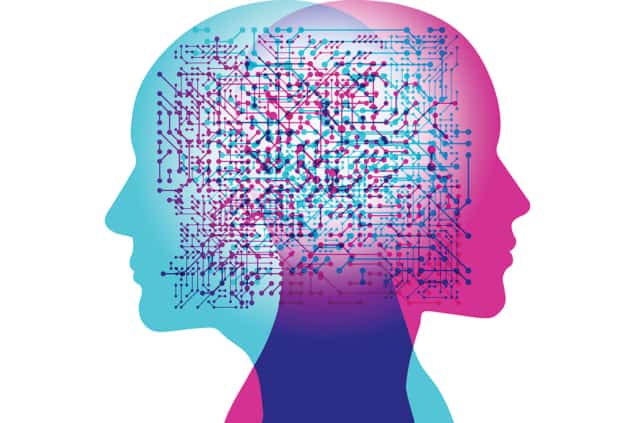Are neuromorphic systems the future of high-performance computing?
08 Mar 2022 Hamish Johnston

The human brain is remarkably good at storing and processing information. While our knowledge of how the brain works is by no means complete, scientists and engineers are developing computing technologies that mimic how neurons operate in the brain. This is not just about building faster computers; the brain is also very energy efficient and early indications are that neuromorphic systems could deliver improved energy efficiency. This is an important consideration because energy consumption and waste heat are limiting factors for conventional electronics.
A big question for those working in the field is how far we should we go in mimicking the brain. Should future systems be neuromorphic – trying to create systems that are as close to the brain as possible – or should they be inspired by the brain, rather than mimic it?
A good way to think about this is the relationship between birds and aeroplanes. Human flight was inspired by birds and an aeroplane mimics several aspects of avian flight – the most obvious being two wings. But an aeroplane is by no means a copy of a bird – jet engines are very different from wing-flapping muscles, for example.
Four experts
This week, four experts took part in a debate about the future role of neuromorphic systems in computing. The event was chaired by Regina Dittmann, who is an expert on electronic materials at the Forschungszentrum Jülich in Germany.
Arguing the case for neuromorphic computing were Kwabena Boahen – the founder and director of Stanford University’s Brains in Silicon lab in California – and Ralph Etienne-Cummings, who directs the Computational Sensory-Motor Systems Laboratory at Johns Hopkins University in Maryland.
Advocating caution were Yann LeCun – who is chief AI scientist at Meta (Facebook) and member of the Computational Intelligence, Learning, Vision, and Robotics Lab at New York University – and Bill Dally is a chief scientist at NVIDIA and a member of Bio-X at Stanford University.
Integration in 3D
Boahen kicked off the debate by saying that the success of neuromorphic computing hinges on our ability to integrate and scale-up components as demonstrated by the semiconductor industry, which achieved exponential growth in the number of transistors on a chip for many years. To illustrate the importance of the time constant in this neuromorphic Moore’s law, he used an amusing unit of neuromorphic computing power – the capybara’s brain – which he compared to a fly’s brain.
Moving from 2D to 3D architectures would help to drive integration, Boahen believes, but there are many challenges.
Etienne-Cummings pointed out that neuromorphic computing is very different to conventional computing. Unlike electronic pulses in a computer, voltage spikes in a neural system do not carry information, rather it is intervals between spikes that are important. In a sense, neuromorphic systems reach into the fourth dimension.
Medical applications
He emphasized that spike-based neuromorphic systems will play important roles in integrating biological systems with conventional computers. This would lead to better medical technologies such as prosthetics, for example.
Speaking about the limitations of neuromorphic computing, Dally pointed out that spikes are an inefficient way of representing numbers. This means that they are not particularly useful for doing many tasks that are currently done by conventional computers. Indeed, he said that we need to think more about what neural network models are appropriate for what tasks – using the example of the bird and the aeroplane. Neuromorphic systems would be useful for simulating biology, he said.
LeCun concurred about the need to be smart about what we copy from the brain in computing systems. He pointed out that the analogue electronics needed for neuromorphic computing are very difficult to build and integrate at the moment, and asked if a revolution in technology is coming.
Neuromorphic accelerators
He said that neuromorphic systems could act as accelerators that carry out specific tasks for conventional computing systems. He suggested the example of an accelerator for augmented-reality eyeglasses.READ MORE

So, was the audience convinced by the neuromorphic advocates or by the sceptics? A poll at the beginning of the debate carried out by Dittman suggested that 46% of the audience agreed that neuromorphic systems are the future of high-performance computing. After the debate, this rose to 56%: so the ayes have it.
You can register to watch the debate here: The future of high-performance computing: are neuromorphic systems the answer? The debate is sponsored by the journal Neuromorphic Computing and Engineering. It is published by IOP Publishing, which also brings you Physics World.
Kwabena Boahen talks about silicon-based neuromorphic computing in this episode of the Physics World Weekly podcast.

Hamish Johnston is an online editor of Physics World
FROM PHYSICSWORLD.COM 4/4/2022
Δεν υπάρχουν σχόλια:
Δημοσίευση σχολίου